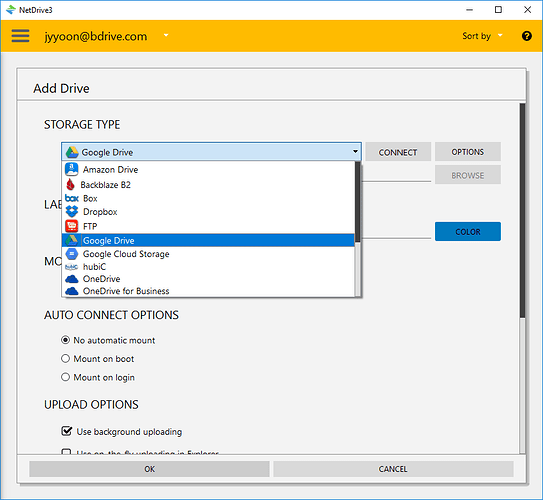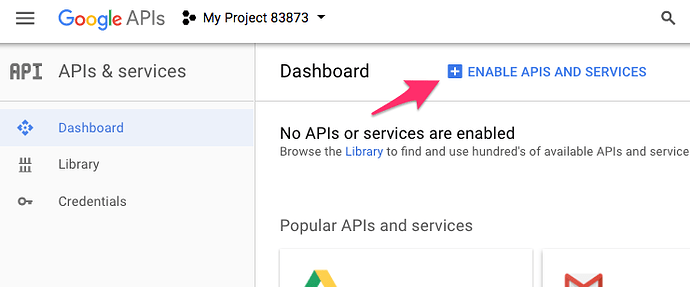

- #USE NETDRIVE TO DOWNLOAD A GOOGLE DRIVE INSTALL#
- #USE NETDRIVE TO DOWNLOAD A GOOGLE DRIVE FULL#
- #USE NETDRIVE TO DOWNLOAD A GOOGLE DRIVE WINDOWS#
However, you don’t need two (or more) machines for these utilities to have value. If you create or save a document on machine “A”, it is automatically replicated or updated on machine “B” (and “C” and “D” and however many you are using with the utility). The key feature these utilities provide is the automatic syncing of documents between multiple computers.

If you prefer, however, there are alternatives, including SugarSync, Box.com, Spideroak, Google Drive, Microsoft OneDrive, and more. I’m going to use Dropbox as an example throughout this article, as it’s a ubiquitous and popular utility. Every time you save a file, you’ll back it up with Dropbox. Leverage this for automatic backups by changing your default working folder to be a folder within Dropbox. As a side effect, the files are also replicated to Dropbox’s online cloud storage. Dropbox is designed to automatically copy files between machines. a server that has the Active Directory Remote Server Administration Tools (RSAT) installed), launch the Group Policy Management console. On a domain controller or bastion server ( i.e. New PowerShell Logon Script (see script contents in the Configuration Process section of this article).ġ.
#USE NETDRIVE TO DOWNLOAD A GOOGLE DRIVE WINDOWS#
User Configuration > Policies > Windows Settings > Scripts (Logon/Logoff)
#USE NETDRIVE TO DOWNLOAD A GOOGLE DRIVE FULL#
In that scenario, the remaining steps for creating the mapped drive are not required.įor a full list of available registry settings for Drive FS, please refer to. NOTE: If you don't wish to use a network drive letter, you can set the DefaultMountPoint value to any folder in the user's profile, such as %%\Desktop or %%\Documents. If you were entering these registry values directly on a Session Host (using Registry Editor, for example), you would not include the angle brackets in that case, the value for the DefaultMountPoint entry would be %USERPROFILE%\DriveFS rather than % %\DriveFS. Without the brackets, the variable will be expanded in the context of the SYSTEM account before it is written to the registry, and this will result in an incorrect value. NOTE: When configuring registry keys using Group Policy Preferences, it is important to "escape" system variables such as %USERPROFILE% using angle brackets (). HKLM\Software\Policies\Google\DriveFS\DefaultMountPoint The settings defined by the GPO will be the following:Ĭomputer Configuration > Preferences > Windows Settings > Registry The OU for a Collection will be located in a path that is similar to the following: OU=,OU=USS Servers,OU=,DC=contoso,DC=com With Drive FS installed on each Session Host in a Collection Pool, you can then create a custom group policy object (GPO) and link it to the specific organizational unit (OU) for the Collection Pool.
#USE NETDRIVE TO DOWNLOAD A GOOGLE DRIVE INSTALL#
You may pre-install the application on a custom OS image that you then deploy to your Collection Pools, or you may use a third-party management application to install the application on each Session Host after they are created. This can be achieved by creating a custom image with Drive File Stream installed, or by using a third-party package management solution to install Drive Stream after Session Hosts are created.Ī group policy object to set several registry keys to enforce Drive FS behavior, create a target folder in each user's profile for Drive FS, and running a logon script to create a user-level drive mappingįollow the instructions provided by Google for deploying Drive File Stream on your Session Hosts. To use this functionality, the following configuration will be used:ĭrive File Stream must be installed on each Session Host in the Collection (or Collections) that users will access. Although every effort has been made to ensure accurate data, itopia does not provide any support for the configuration described below. NOTE: This article is provided for informational purposes only. This article will describe using a custom group policy object to achieve this configuration. To resolve this, the Drive FS data must be mapped to a unique directory for each user and, optionally a user-level drive mapping must be configured to present the mapped H: drive (or any other drive letter) only to a specific user. In a multi-session environment such as Remote Desktop Services, this creates an issue where multiple users can see each others' drive folders, although the contents of the drives are inaccessible.


The default behavior provided by Drive FS is to map the user's Google Drive data to a system-wide network drive on their Windows Desktop. Google Drive File Stream (Drive FS) is a utility that allows users to access their Google Workspace Drive data like a local drive on their Windows desktop.


 0 kommentar(er)
0 kommentar(er)
